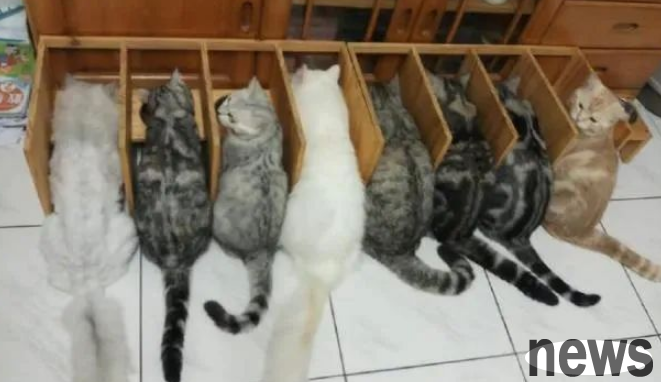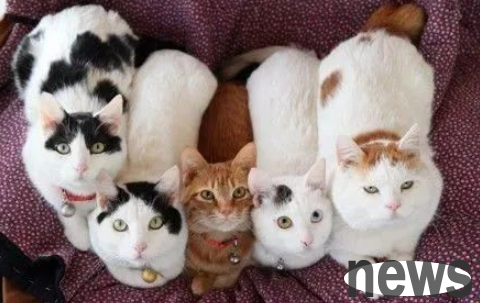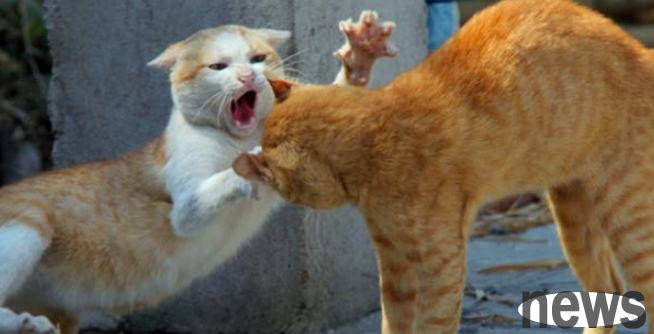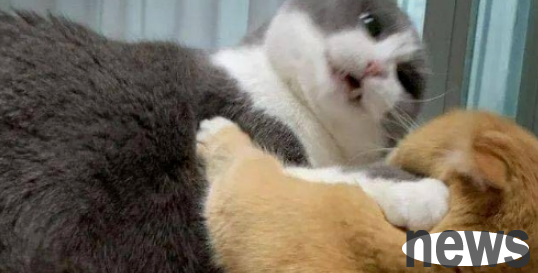Raising cats seems to have a magical power. Once you raise the first one, you will want to raise the second one, and then you will raise more and more... Especially the cute pet bloggers on the Internet, there are seven or eight cats at home, surrou...
Raising cats seems to have a magical power. Once you raise the first one, you will want to raise the second one, and then you will raise more and more... Especially the cute pet bloggers on the Internet, there are seven or eight cats at home, surrounding the master, hugging them from both sides, and they are like gods!
It is really hard for anyone not to be moved!

(Photo source)
But once the second and third cats are really brought into the house, many cat owners are immediately slapped in the face...
The multi-cat family you imagine: warm, harmonious, kind, filial mother, happy, and happy
The multi-cat family in reality: left hook punch, right kick, uneasy chickens and dogs, bullying
Of course, some cat owners want to raise a "second child" starting point is:
I only come back at night when I go out to work every day, leaving the cat alone at home. Do you want to find a companion for her?
So in response to this situation, the editor believes that normally, as long as we have toys for cats, space for free to move, and we will take a fixed time to play with the cat every day, it will not feel bored. So it is not necessary to introduce a second cat to realize the "companionship" function. So if we really like cats too much, like the feeling of "cats growing up" at home, and really want to form a multi-cat family, how can we balance the relationship between each cat? Is the psychological pressure of cats in multiple cat families really greater than that of single cat families? How to "handle a bowl of water" in reality?
Don't be anxious, let's take a look at the indicators for judging whether a multi-cat family is happy! Happy families are always similar.
How to judge whether a multi-cat family is harmonious and happy? That is, people and cats living in this family are not stressed or have health problems. For specific purposes, you can refer to the following standards:
✔ Cats have frequent friendly behaviors, such as licking each other's hair, sleeping together, and playing.
✔ There is no hostility between cats, such as sniffing, chasing and fighting (scratching, slamming, ruthless mouthing), obstructing the other party from eating or using cat litter box.
✔ Each cat has a certain private cat space and has a place to go when you want to be alone.
✔ Adequate resources, no need to compete for competition.

(Photo source network)
Unfortunate multi-cat families have their own misfortunes
In fact, raising a second cat is not a simple cat litter boxX2, cat foodX2.
Because each cat has its own habits, it may not necessarily be able to live in harmony. There are always trivial problems in daily feeding, such as fighting and fighting, you have to persuade them to fight; if one cat gets an infectious disease in the future, it will easily be transmitted to the other cat; both cats need their own living space, whether the home is big enough, etc.

(Photo source network)
Many cats may have many behavioral and health problems, among which the more common ones are:
1. Diseases caused by stress. For example, idiopathic cystitis, obsessive-compulsive disorder (over-laugmenting hair), obsession and diabetes, loss of appetite and fatty liver, neurologic diarrhea and vomiting, cat nasal branches, etc.;
2. Infectious diseases. People and cats living in the same dense space are prone to cross-infection. There are various types of pathogens, such as viruses (cacitivirus, cat AIDS, leukemia, herpes virus), bacteria, fungi, internal and external parasites, etc.
3. Fight. Cats may fight because of illness, pain, resource competition, lack of socialization, etc.

(Photo source network)
4. Diet problems. Each cat has a different personality and appetite. In a family of multiple cats, some cats are prone to eating too much, which leads to obesity; others are malnutrition because they cannot grab food. Moreover, in this environment of resource competition, cats tend to become excessive in their personalities.
5. Reproduction problem. If there are male cats and female cats at home, and they are not spayed, they are likely to mate during the breeding season, and what awaits you is a litter of kittens that cannot be raised or sent out, causing a vicious cycle.
Picture

(Picture Source Network)
The most important question is, as a parent, can you achieve a balanced meal? If one cat at home is obedient and the other is naughty, can you treat it equally without being biased? If the first cat allows us to feel the feeling of being a parent for the first time, then the second cat is a test of our human nature. Do we have enough time, energy and money to deal with it?
How to solve these problems
1. Choose a cat that is easier to get along with, such as:
✔ Female cat and her children.
✔ Brothers and sisters.
✔ A kitten who has no blood relationship but has spent the "socialization" period together.
✔ A cat that has been spayed.

2. A survey conducted by the Cornell University research team in the United States shows that if cats do not leave a good impression on each other for the first time, this is likely to lead to lasting hostile relationships and increase the frequency of fighting.
Therefore, without any preparation, it is absolutely undesirable to let the indigenous people meet with the new cat directly! (But as you live together, the fight will gradually decrease)